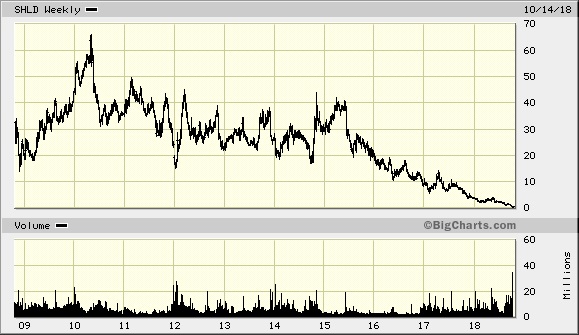As I write this, the venerable Sears Holdings is completing the walk of shame through bankruptcy court. Don’t confuse this with Sears Canada; its subsidiary here in Canada, which went toes up this time last year. Sears was one of the venerable retailers of the past century. The reality is the status of Sears as a viable business ended many years ago. Slow decay with an ultimate bankruptcy was only a matter of time. It was also mostly a self-inflicted death.
The narrative surrounding retail shopping is Amazon, Amazon and AMAZON! Every department store, specialty store, pharmacy, grocery chain and office supply company has been killed by the behemoth that is Amazon. In truth, that’s not the case. In 2017 Amazon accounted for just over 4% of total retail sales in the US. That four percent was 44% of online sales. If you did the math like me that means 90% of retail sales was still done in a physical store. Tell me again how Amazon killed retail. Rosy projections are for Amazon to reach 10% of retail sales by 2020/2021. Still a vast majority of purchases will require me to fire up the car engine and drive to a store.
If Amazon is acquitted of Sears’ death, just what caused the long, slow decline to bankruptcy? Bad and selfish management. Linette Lopez of Business Insider does a good job explaining things here. Sears is out of business because management would not commit money to improving stores, updating infrastructure, training staff or pushing towards online sales. The last part is the silliest mistake. Sears was built on the eponymous Sears Catalog that was mailed to every home in North America. When I was seven, I remember cutting out pictures of the Star Wars Action Figures [Editor: NOT dolls!] from the Sears Christmas catalog and attaching them in my letter to Santa. Sears was built on mail order. The infrastructure to become an online retailer was already partially in place and more importantly, they had the experience of shipping goods ingrained in their business for generations.
Alas, Sears is dead because the CEO had become too slavish to the idea of “Shareholders First”. The management of a company has to serve many different constituents. Successful ones know that balancing the needs of employees, customers, suppliers AND shareholders will be a constant juggling act. If you work too hard to keep one part happy, the other parts can get neglected and start failing. That is what happened to Sears. All decisions were examined through shareholder benefit first. A good CEO, like a good juggler, is adept at keeping a lot of balls in the air. You are not a juggler; nor a CEO, if you only have one ball you keep in the air.
What are we to do to combat against the Shareholders First idea? If you are an investor or advising clients, look for companies that are regularly and consistently putting money back into their business. Research and development, hiring new people and expanding your markets are important hallmarks of companies that are good stewards. That does not mean they all will be successful but if they make a dollar and pay out $0.99 to shareholders that should give you pause for thought on the long term prospects.
Look for companies that will take some risk to find new growth just make sure they are also good at cutting off a failure quickly. The last part is really important. Knowing when to stop spending good money on a bad idea is a skill very few of us truly have mastered.
Shareholders are important part of being a public company but too often maximizing the value for the shareholder means “maximize the value for the next year.” That is short-term thinking and it can work great for the year or two or maybe three but eventually the chickens come home to roost.

That chart above is the stock of Sears Holdings and the middle of this chart (2013-2015) is the transition period where the new management worked to maximize shareholder value. It worked pretty good and seemingly stabilized a business that had been poorly run for years prior. It worked that is, until it stopped working in the middle of 2015 and began the slow decline to zero. Sales declined because the stores were old and outdated and the product mix was awful. Employee morale declined because they worked in giant, empty stores with nothing to sell. It was a self-fulfilling cycle all because one stakeholder got more attention than the rest.
I can admit it is easy for me to kick at Sears and cherry pick them as an example. It is very likely that their problems were long entrenched and the slide to bankruptcy was going to happen no matter the management in place. Most of us cannot recall the last time we bought anything at Sears. Retail has modernized at an incredible pace and it is an industry built on the Darwinian principle of survival of the fittest. However I have seen too often instances of companies that got too focused on the shareholder at the expense of everyone else. In the end that poor judgement hurt everyone, including the shareholders.

